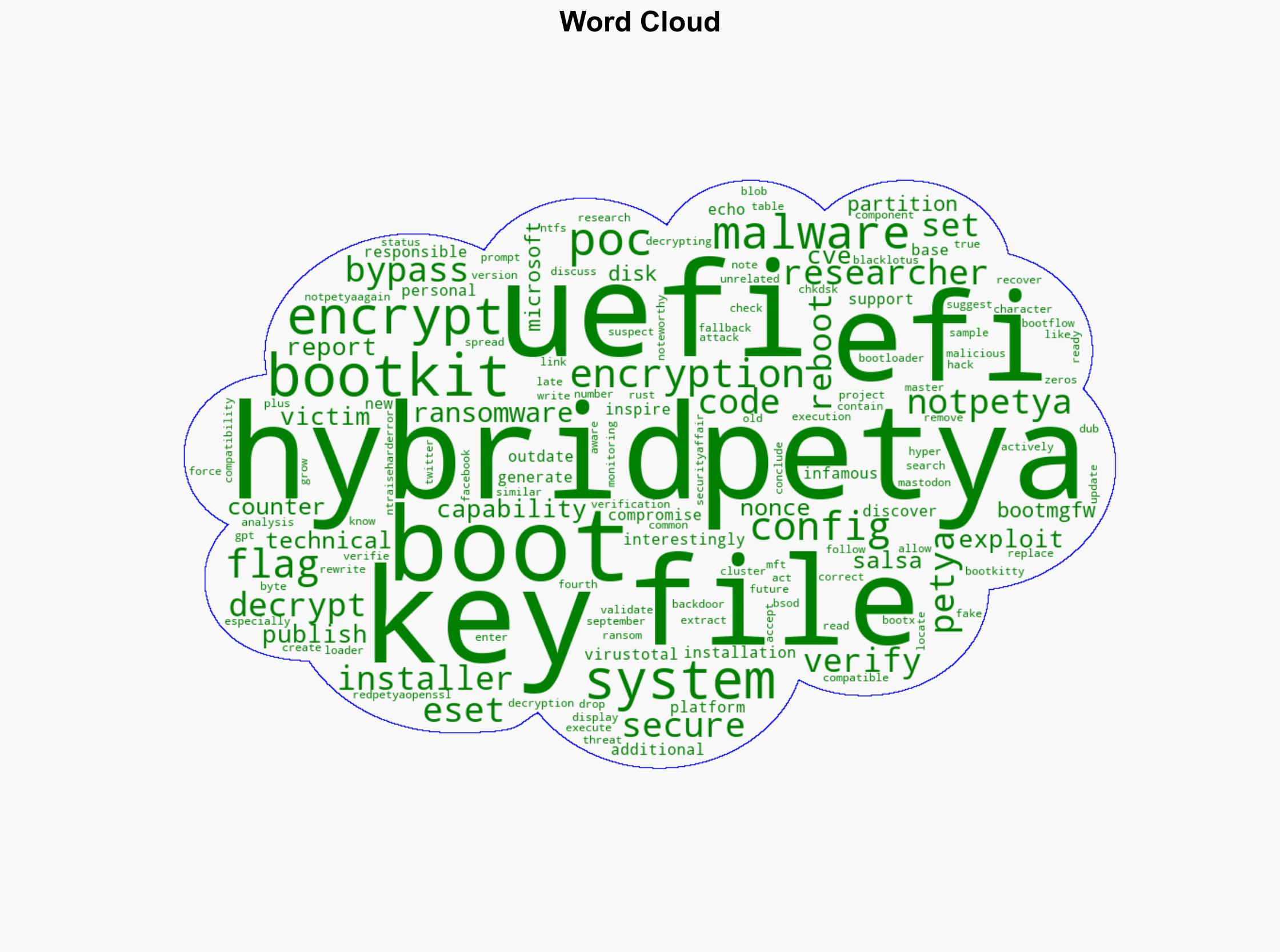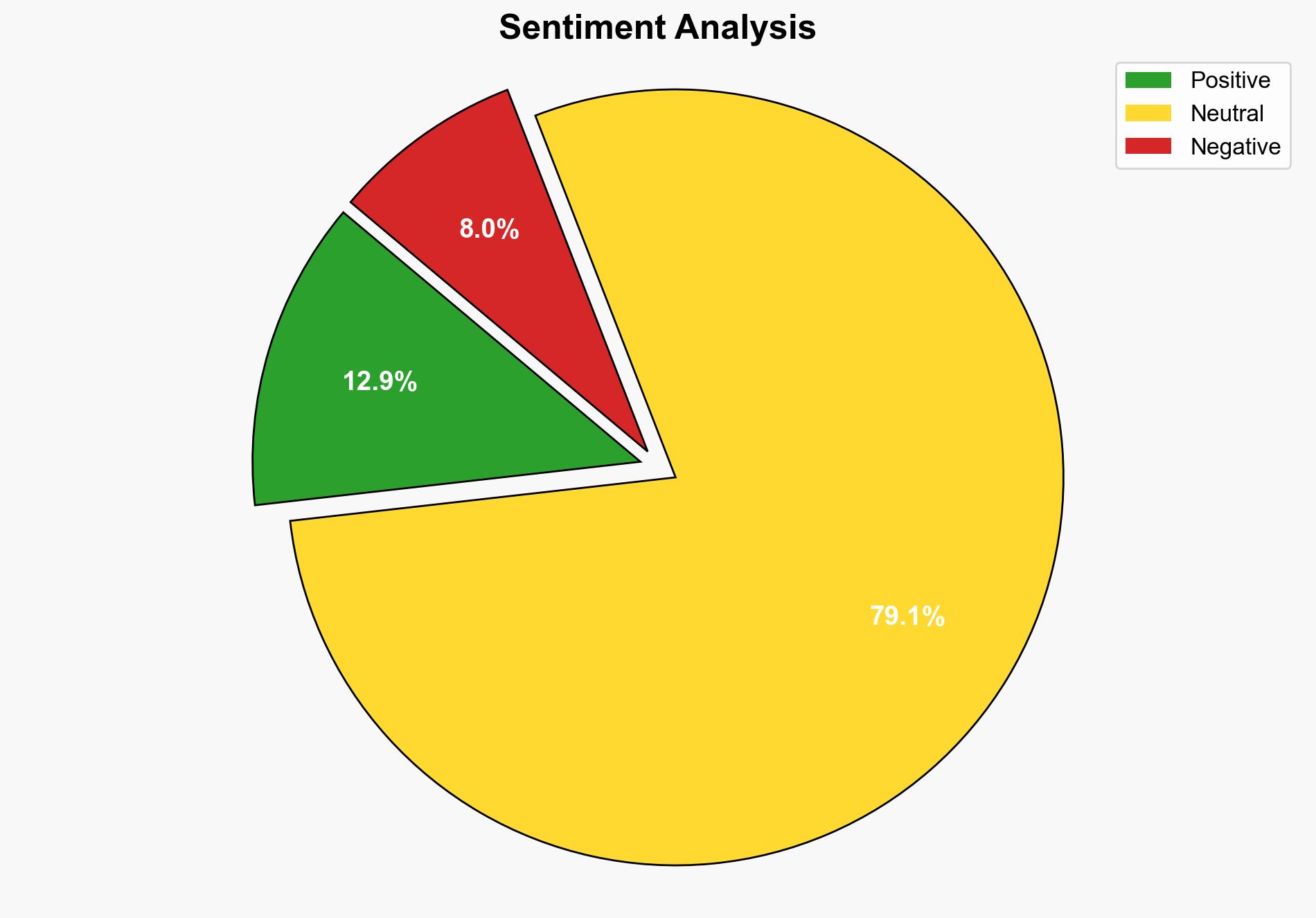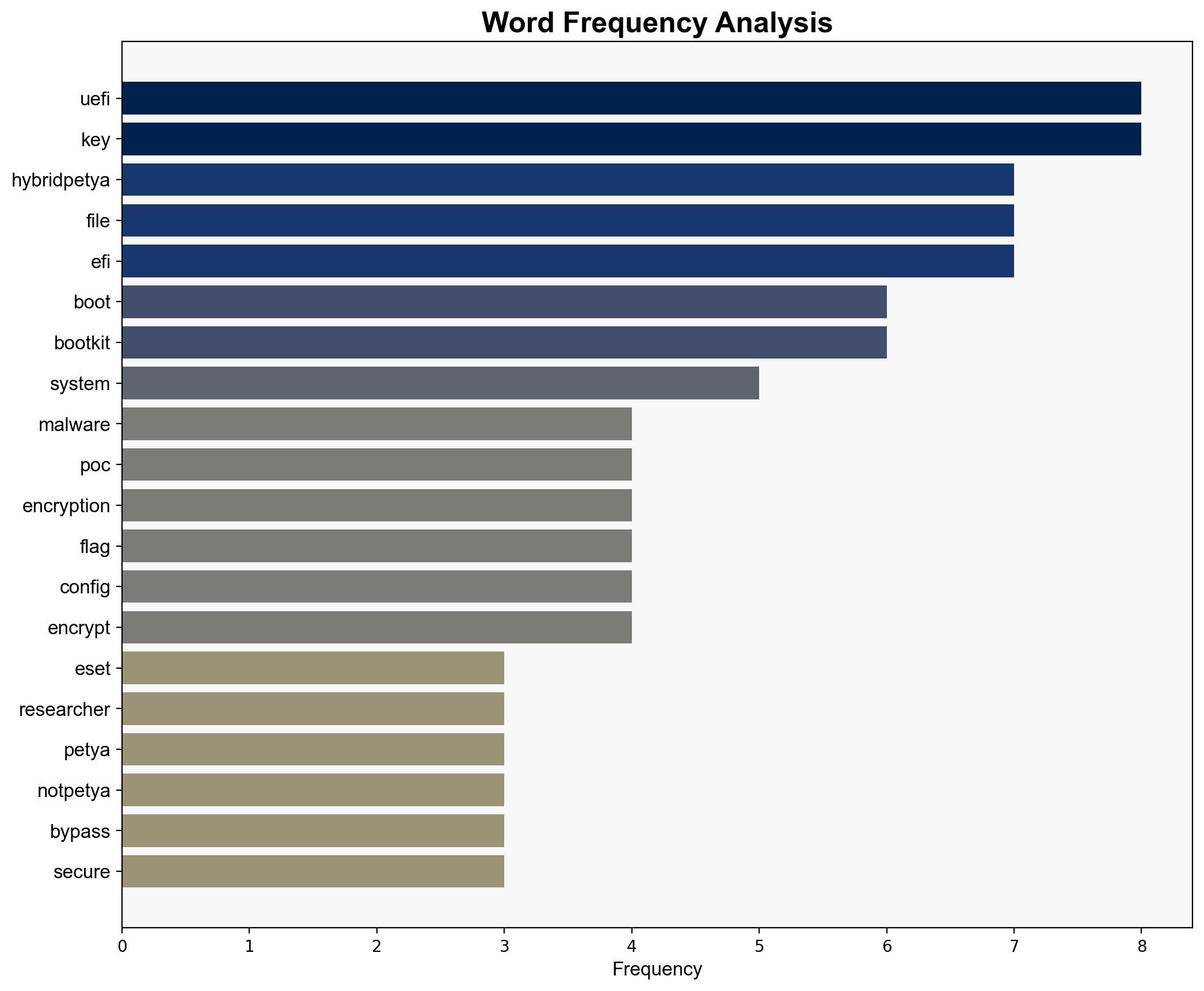HybridPetya ransomware bypasses UEFI Secure Boot echoing PetyaNotPetya – Securityaffairs.com
Published on: 2025-09-13
Intelligence Report: HybridPetya ransomware bypasses UEFI Secure Boot echoing PetyaNotPetya – Securityaffairs.com
1. BLUF (Bottom Line Up Front)
HybridPetya represents a significant evolution in ransomware capabilities, particularly with its ability to bypass UEFI Secure Boot. The most supported hypothesis is that HybridPetya is a sophisticated research project potentially linked to state-sponsored actors, given its technical complexity and resemblance to previous high-profile malware. Confidence level: Moderate. Recommended action: Enhance monitoring of UEFI vulnerabilities and collaborate with cybersecurity agencies to develop countermeasures.
2. Competing Hypotheses
1. **Hypothesis A**: HybridPetya is a state-sponsored research project aimed at testing advanced ransomware capabilities, particularly targeting UEFI systems.
2. **Hypothesis B**: HybridPetya is the work of independent cybercriminals leveraging publicly available exploits to create a new strain of ransomware for financial gain.
Using ACH 2.0, Hypothesis A is better supported due to the complexity of the malware and its resemblance to state-level cyber operations like NotPetya. The technical sophistication required to bypass UEFI Secure Boot suggests access to significant resources and expertise.
3. Key Assumptions and Red Flags
– **Assumptions**: Hypothesis A assumes state-level resources and motivations; Hypothesis B assumes availability of exploits to independent actors.
– **Red Flags**: Lack of direct attribution to any known state actor; absence of clear financial demands typical of ransomware.
– **Blind Spots**: Potential underestimation of independent actors’ capabilities; limited information on the malware’s origin.
4. Implications and Strategic Risks
HybridPetya’s capabilities pose a strategic risk to critical infrastructure, particularly if leveraged in geopolitical conflicts. The ability to bypass UEFI Secure Boot could lead to widespread system compromises, impacting economic stability and national security. The malware’s evolution indicates a trend towards more sophisticated cyber threats, necessitating enhanced defensive measures.
5. Recommendations and Outlook
- Enhance UEFI security protocols and patch management systems to mitigate vulnerabilities.
- Increase collaboration with international cybersecurity agencies to share intelligence and develop joint countermeasures.
- Scenario Projections:
- Best: Rapid identification and patching of UEFI vulnerabilities prevent widespread impact.
- Worst: HybridPetya is deployed in a coordinated attack on critical infrastructure, causing significant disruption.
- Most Likely: Continued development and testing of HybridPetya by state or non-state actors, leading to isolated incidents.
6. Key Individuals and Entities
– ESET researchers (no specific names provided)
– Securityaffairs.com (source of the report)
7. Thematic Tags
national security threats, cybersecurity, counter-terrorism, regional focus





